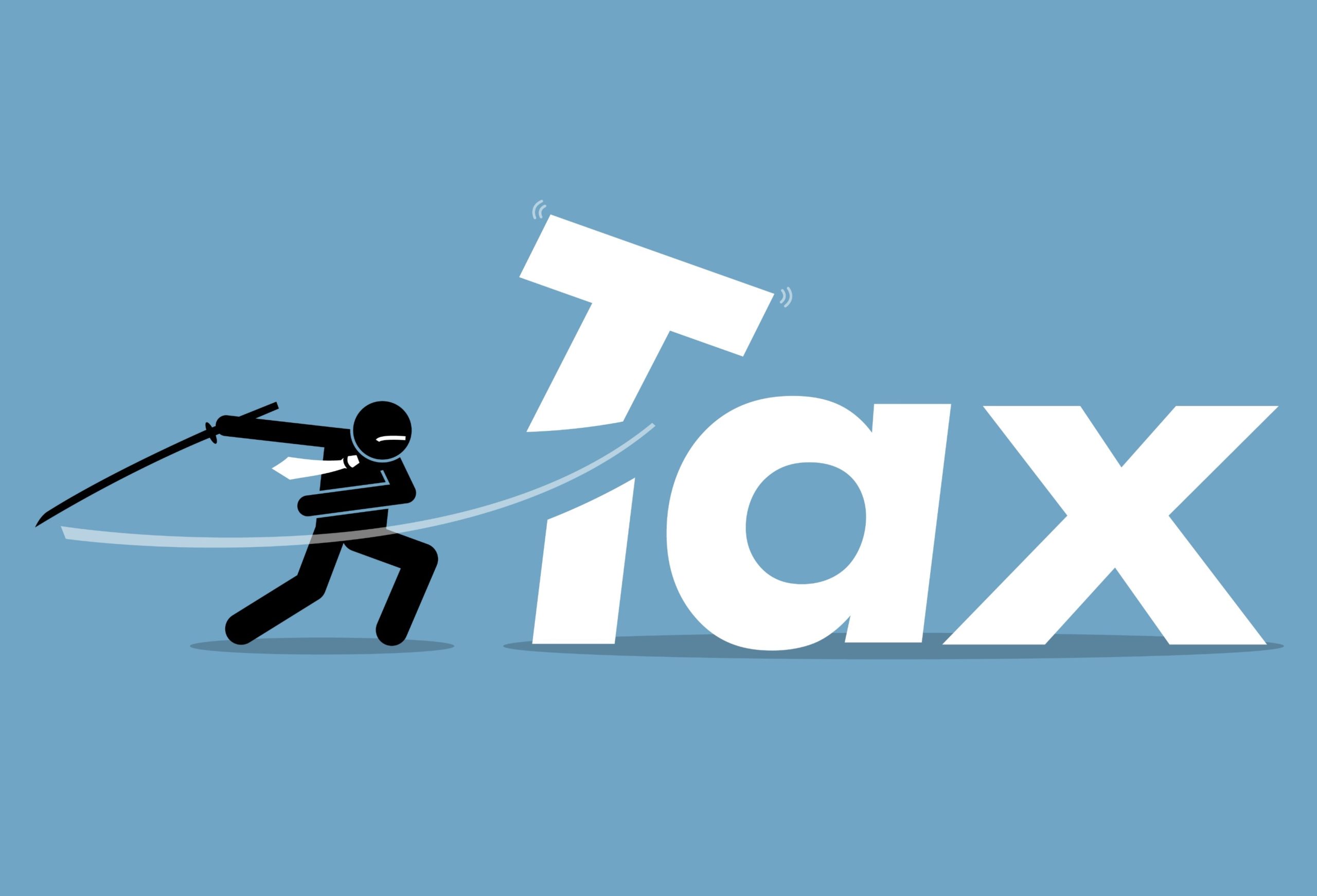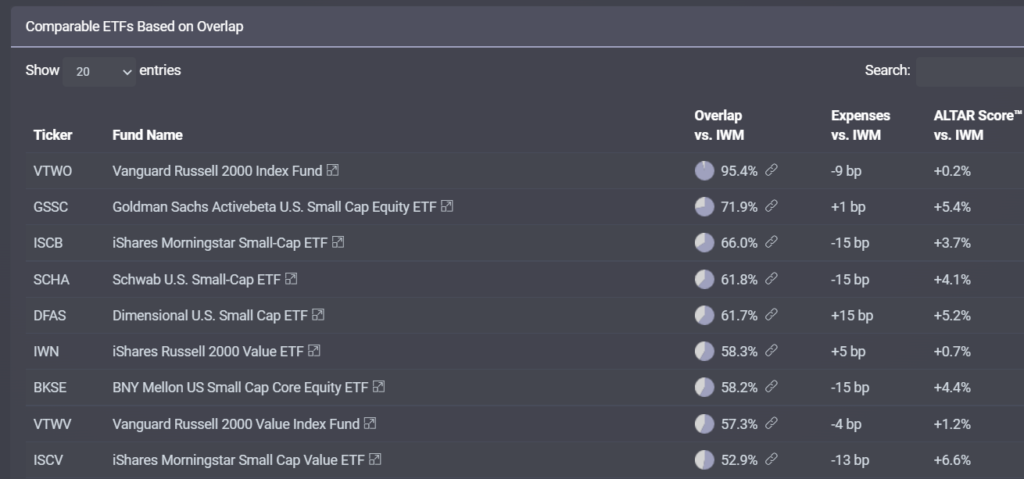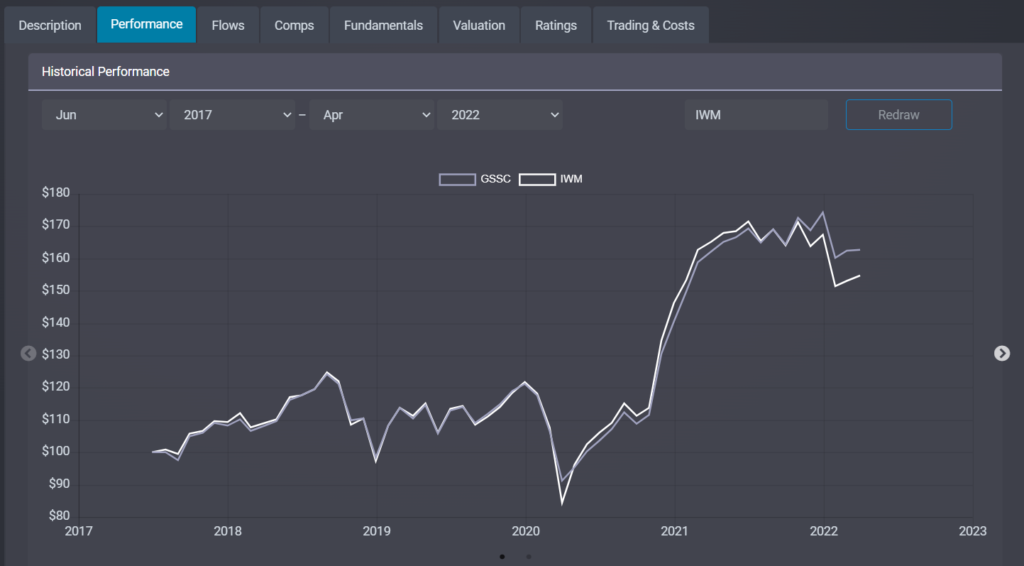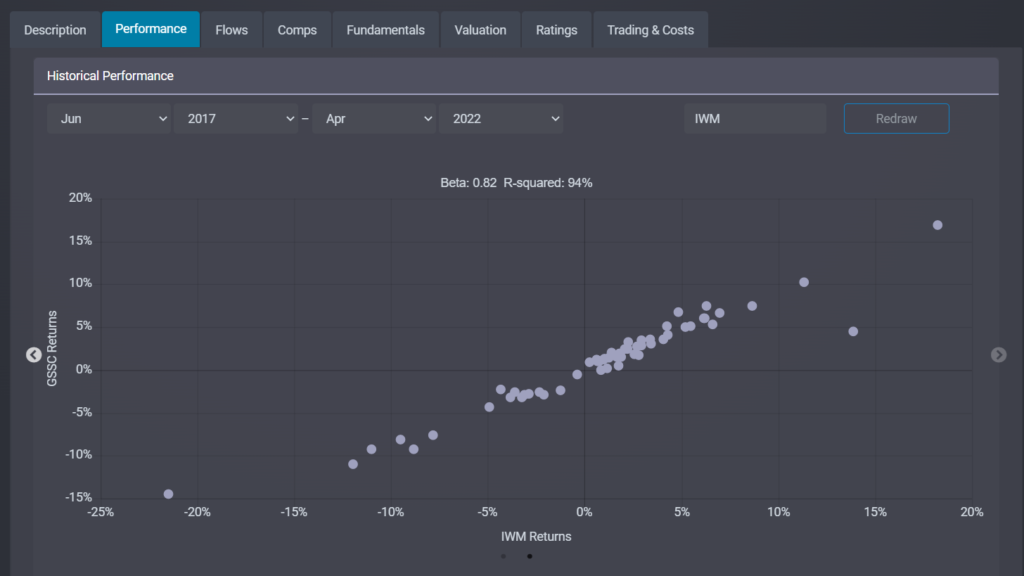
Many investors don’t think about selling losing investments to offset capital gains until the end of the year approaches. But tax loss harvesting is a powerful strategy for improving after-tax returns that can be used year round. And with markets down substantially so far in 2022, now is a good time to take stock.
One pitfall that investors need to avoid is the Wash Sale Rule, whereby the IRS disallows tax losses if an investor buys a “substantially identical” security within 30 days of the sale. For ETF investors this is easily accomplished, while maintaining and possibly even improving one’s market exposure. The ‘Comps’ tab on an equity ETF’s fund focus page will help you find suitable replacements for any ETF you’d like to sell for tax purposes.
Check the Comps tab to harvest tax losses while staying invested
For example, let’s say you want to harvest your losses on the iShares Russell 2000 ETF (IWM), which is down about 21% year-to-date. The Comps tab on IWM’s fund focus page provides a list of comparable ETFs based on overlap in underlying holdings (scroll down past the Risk & Returns scatter plot). Besides the overlap between IWM and the alternatives, also shown is the difference in expense ratios and ALTAR Score™ ratings.

The first potential replacement for IWM on the list is the Vanguard Russell 2000 (VTWO), with 95% overlap, and a lower expense ratio by 9 basis points. Although the IRS’s “substantially identical” rule is vague, swapping IWM for VTWO seems aggressive and could risk being disallowed under the Wash Sale Rule, given the high overlap and tracking of the same benchmark.
The next fund on the list is the Goldman Sachs ActiveBeta U.S. Small Cap Equity ETF (GSSC), with 72% overlap. It costs 1 basis point more and is not as widely held, but given the lower overlap and rules-based management style, it is eminently defensible as a replacement for IWM that should not run afoul of the Wash Sale Rule while allowing an investor to maintain very similar exposure to domestic small caps.
To confirm how closely these two funds have performed, click through the link to GSSC’s fund focus page and open the ‘Performance’ tab. Enter IWM in the ‘comp ticker’ box and hit the Redraw button. You’ll see a relative performance graph like the one below (you can choose a different time frame if you wish).

The correlation is plain to see, though GSSC has actually fared a bit better in the recent sell-off. Swipe left (or use the arrow icon) for a scatter plot of the two ETFs, with calculations for Beta and r-squared shown at the top. GSSC and IWM have a high r-squared value of 94%, making GSSC a good candidate to replace IWM.

You can run through the same steps with the third ETF on the ‘Comps’ tab, the iShares Morningstar Small Cap ETF (ISCB). It has only 66% overlap with IWM, but performance comparison shows it has an even higher r-squared of 96% (over a substantially longer performance history), making it a suitable replacement as well. And it is 15 basis points cheaper then IWM!
If small caps rally in the next month, then you will have captured a tax loss while still participating fully in the rebound. If the bear market continues but you want to stay invested, after 30 days you could harvest losses again and switch back to IWM, or to a third small cap ETF.
Bear markets are painful, but by checking the Comps tab for suitable replacements ETF investors can make Uncle Sam share in the losses while staying fully invested as they wish. The top 10 Comps by overlap are available to all, while Individual and Professional subscribers can access the complete list.





